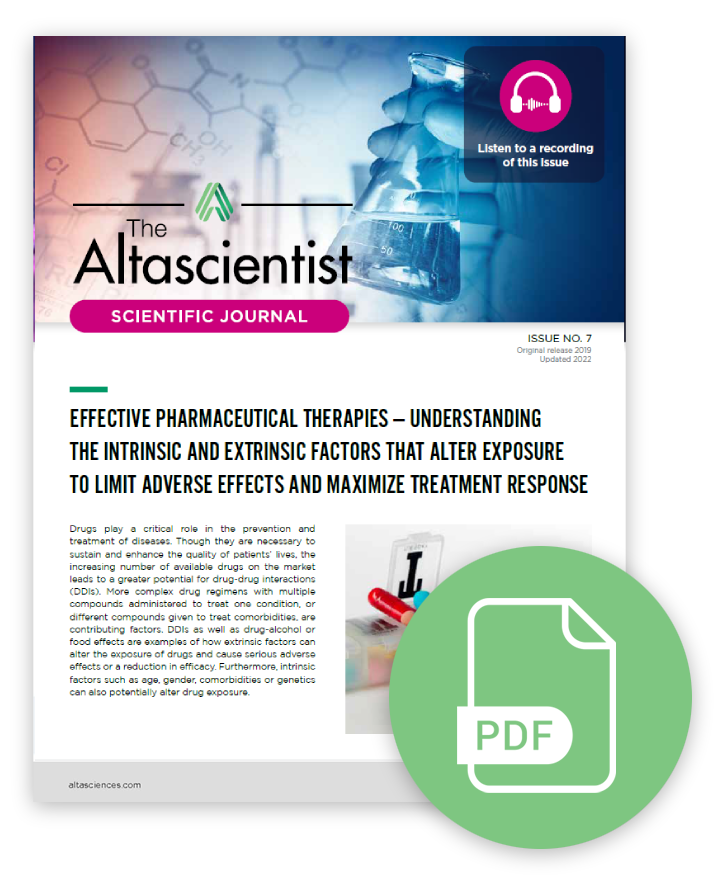ISSUE NO. 7 — Understanding the Intrinsic and Extrinsic Factors that Alter Drug Exposure and Toxicity

Intrinsic factors such as age, biological sex, comorbidities, or genetics can potentially alter drug exposure, as can extrinsic factors such as concomitant drugs, supplements, the environment, and food and beverages. One of the most important factors to consider during the course of your early-phase clinical research is drug-drug interactions (DDIs), which occur when one drug alters the effect of another, either by reducing its effectiveness or elevating systemic concentrations to potentially dangerous levels—ultimately causing side effects.
In some cases, these side effects could be life-threatening, such as drops in blood pressure, irregular heartbeats, or organ damage.
In Issue 7 of The Altascientist, we delve into these factors, the importance of drug interaction studies, and how to limit adverse effects and maximize treatment response. Listen to the audiobook or download the PDF below, to learn more about:
- key factors to consider in drug development (age, biological sex, genetics, DDIs);
- examples of common DDI involving the cytochrome P450 enzyme system; and
- drug interactions and guidance for marketed drugs.
The issue also features a drug-drug interaction case study, in which the effects of two doses of a sponsor’s investigational product on the pharmacokinetics of multiple oral doses of clopidogrel, and a single dose of warfarin in healthy adult subjects were evaluated.
Identifying Drug-Drug Interactions (DDIs)
The increasing number of drugs on the market has led to a greater potential for drug-drug interactions, and more complex drug regimens with multiple compounds administered to treat one condition or different compounds given to treat comorbidities, are also contributing factors. These interactions must be identified during the development process as part of the assessment of the drug’s risks and benefits.
According to the FDA’s 2024 guidance titled M12 Drug Interaction Studies, clinically significant DDIs between investigational and other drugs should be addressed at various stages of drug development. They should also be thoroughly understood through nonclinical and clinical studies by the time the drug is approved, monitored after approval, and clearly communicated in the drug's labeling to ensure proper management strategies for clinically significant DDIs and safety. In M12, the FDA states, “The potential for an investigational drug to cause DDIs should be investigated in a stepwise manner during drug development. The potential for an investigational drug to cause pharmacokinetic interactions both as an object (effect of other drugs on the investigational drug) and as a precipitant (effect of the investigational drug on concomitant drugs) should be evaluated.”
Explore all issues of The Altascientist in our Resource Center. And don’t forget to subscribe to The Altascientist: Audiobooks on Spotify, Apple Podcasts, or wherever you get your audio content.